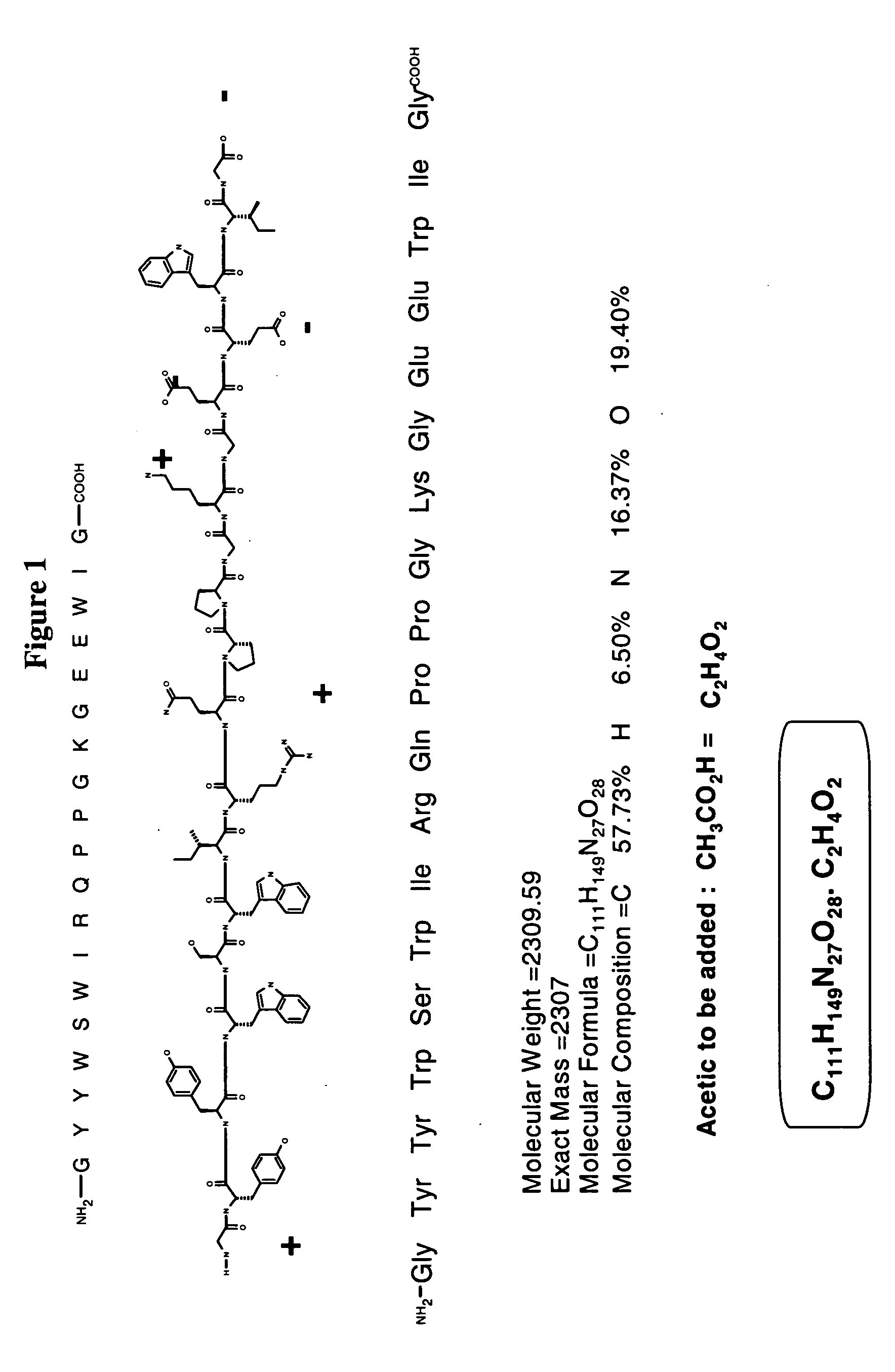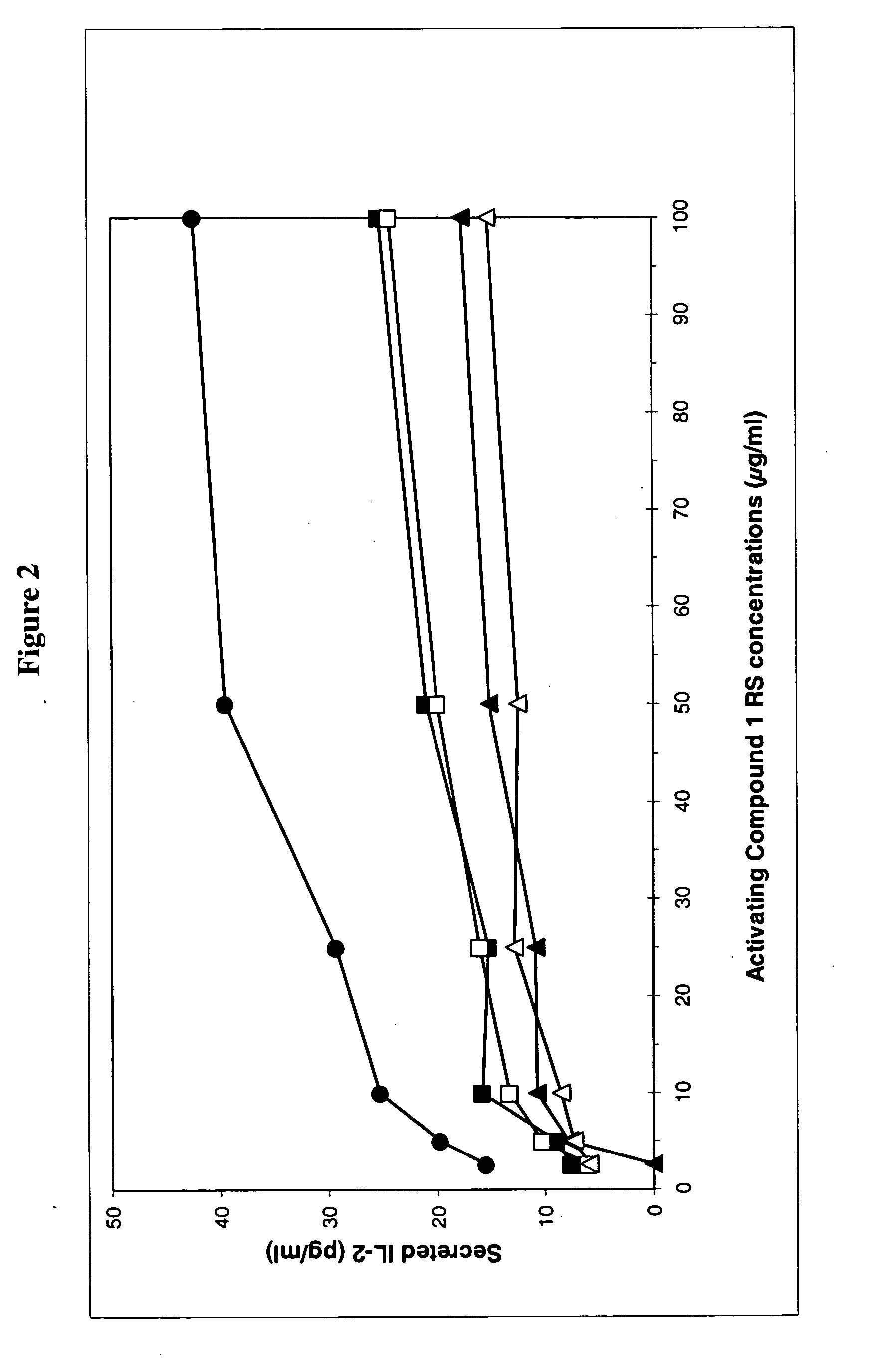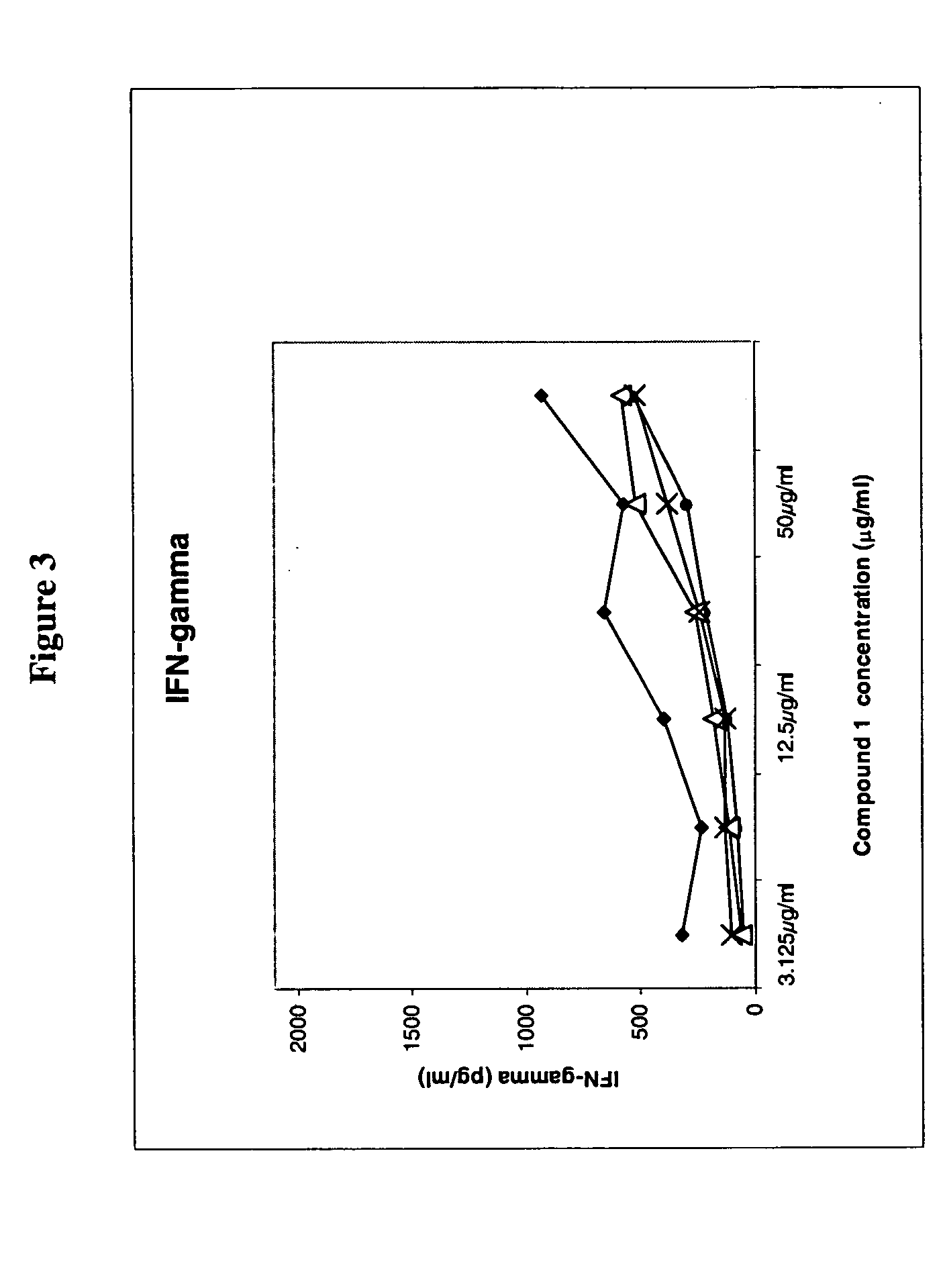Parenteral formulations of peptides for the treatment of systemic lupus erythematosus
a technology for lupus erythematosus and parenteral formulations, which is applied in the field of parenteral formulations of peptides for the treatment of systemic lupus erythematosus, can solve the problems of increased infections with opportunistic organisms, patient compliance to a dosage regimen, and other problems, to achieve the effect of reducing the symptoms of sl
- Summary
- Abstract
- Description
- Claims
- Application Information
AI Technical Summary
Benefits of technology
Problems solved by technology
Method used
Image
Examples
example 2
Preparation Protocol for Solution of Compound 1 in Captisol.RTM.
[0314] Standard dissolution methods, such as mixing dry Compound 1 and dry Captisol.RTM. into water or adding Compound 1 to a prepared solution of Captisol.RTM. and water did not result in complete dissolution at the desired concentrations. Several different concentrations of both Compound 1 and Captisol.RTM. were tested at various pH levels. However, the following method for producing a solution of Compound 1 in Captisol.RTM. resulted in complete dissolution at the desired concentrations.
[0315] Materials: Captisol.RTM., Compound 1 and Water
[0316] Method:
[0317] 1. Weigh the appropriate amount of Captisol.RTM. to give a final concentration of 120 mg / ml.
[0318] 2. Add 80% of the final amount of water and mix for 10 minutes with a magnetic stirrer.
[0319] 3. Weigh Compound 1 to give a final concentration of 2.5 mg / ml, 2.0 mg / ml, 1.0 mg / ml, 0.5 mg / ml or 0.1 mg / ml.
[0320] 4. Add the peptide to the Captisol.RTM. solution. Mix fo...
example 3
Lyophilization of Compound 1 and Captisol.RTM. Solution
[0327] The current lyophilization process differs from other lyophilization processes in that the percentage of solids in the formulation is high (12%) whereas lyophilized products normally contain between 5 and 10% solids.
[0328] Equipment
[0329] The freeze drier used was an Edwards lyophilizer Lyoflex 0.6. The equipment IQ / OQ was performed and checked for compliance by quality assurance prior to the process development.
[0330] Solutions of Compound 1 and Captisol.RTM. at concentrations of 0.5 mg / ml, 1.0 mg / ml and 2.5 mg / ml of Compound 1 were prepared. The fill-volume was adjusted 1 ml (1.05 gr).
[0331] Main Process Steps:
[0332] 1. Freezing
[0333] 2. Holding (at low temperature)
[0334] 3. Drying under vacuum in two stages:
[0335] 3.1. Primary drying--shelf warming to an upper hold temperature, controlling shelf temperature at the upper hold level.
[0336] 3.2. Secondary drying--Pressure reduction to a minimal value at the upper hold she...
example 4
Examination of the In-Vivo Biological Activity of the Lyophilized Compound Solution (DP, 1 mg / vial, 12% Captisol.RTM.)
[0357] The biological activity was monitored by inhibition of IL-2 secretion from Compound 1 reference standard (RS) specific T-cells following subcutaneous (s.c.) treatment with the lyophilized compound solution, i.e. the drug product (DP), at two concentrations. The results of the treatment are compared to those of treating mice with Compound 1 (RS) in phosphate buffered saline (PBS). The results are shown in the tables below and in FIG. 2.
[0358] Experimental Design:
50 1. Immunization Day 0 (Compound 1 RS emulsified with CFA, at all four footpads) 2. Treatment Day 0 (s.c. at the back of the neck, in 200 .mu.l solution) 3. In-vitro activation with: Day 10 a. Compound 1 RS at concentrations of 0; 0.5; 1; 2.5; 5; 10; 25; 50 and 100 .mu.g / ml b. a peptide with the reverse order of amino acids of Compound 1 (negative control). c. Con A (positive control). 4. Incubation o...
PUM
| Property | Measurement | Unit |
|---|---|---|
| concentration | aaaaa | aaaaa |
| concentration | aaaaa | aaaaa |
| temperature | aaaaa | aaaaa |
Abstract
Description
Claims
Application Information
 Login to View More
Login to View More - R&D
- Intellectual Property
- Life Sciences
- Materials
- Tech Scout
- Unparalleled Data Quality
- Higher Quality Content
- 60% Fewer Hallucinations
Browse by: Latest US Patents, China's latest patents, Technical Efficacy Thesaurus, Application Domain, Technology Topic, Popular Technical Reports.
© 2025 PatSnap. All rights reserved.Legal|Privacy policy|Modern Slavery Act Transparency Statement|Sitemap|About US| Contact US: help@patsnap.com



